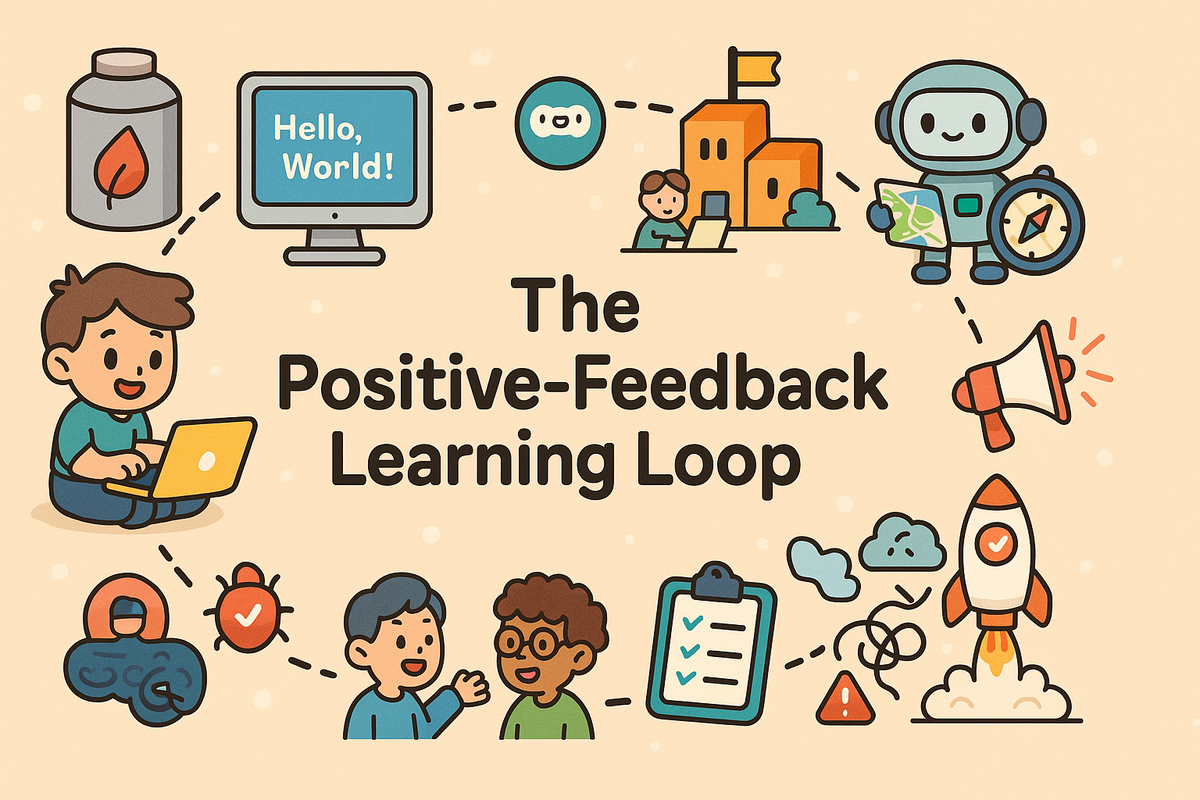Why Is Self-Driven Learning So Hard to Stick With?

Thoughts on Sustaining Self-Driven Learning


Saw a comment recently that inspired me to reflect on why self-driven learning can be hard to maintain.
---
Why Self-Driven Learning Is Hard to Sustain
The short answer: you’re not getting consistent positive feedback.
Effective self-driven learning relies on two core engines:
- Positive Feedback – the fuel that powers motivation.
- The Learning Cycle – the mechanism that internalizes skills.
---
🆙 Engine One: Positive Feedback — The Motivation Fuel
Positive feedback are the moments where learning feels rewarding, motivating you to keep going.
Examples of positive feedback:
- Writing `"Hello World"` and seeing it run correctly.
- Building a small script that saves you 30 minutes of repetitive work.
- Creating an app that genuinely solves a problem for a friend.
Examples of negative feedback:
- Spending all day setting up an environment that still won’t run.
- Staying up all night debugging without finding the error.
- Building a program that nobody uses.
> Humans can’t rely solely on willpower to overcome constant negative feedback.
> Without any wins, quitting is a very human response.
---
♻ Engine Two: The Learning Cycle — The Skill Engine
Feeling good isn’t enough. Real learning comes from repeatedly completing a loop that turns knowledge into skills.
For programming, a typical learning cycle looks like:
- Learn the theory (Study)
- Read books, take courses, watch videos.
- Understand algorithms, data structures, design patterns.
- Build your “knowledge arsenal.”
- Hands-on practice (Do)
- This is the most critical step.
- Write, run, debug, and fix code.
- Engage in learning by doing.
- Watching swimming videos won’t make you a swimmer — you must get into the water.
- Solve real problems (Think)
- Analyze problems → try solutions → hit roadblocks → research → solve.
- This struggle builds experience and resilience.
- AI can’t replace this process. It can output code, but it can’t give you the mental journey from stuck to breakthrough.
> Experts simply run this loop more times and accumulate mental libraries of “problem–solution” patterns.
---
Connecting the Two Engines:
Learning Cycles Generate Positive Feedback
Completing a full cycle — from learning theory to solving real problems — delivers big wins.
That “I can do this!” moment fuels the desire to start the next cycle, creating unstoppable momentum.
---
Scenario 1: Easy Mode — Learning Within a Company
Inside a company:
- You receive tasks (identify the problem).
- You study requirements (learn theory).
- You build the solution (hands-on practice).
- You debug and integrate (solve problems).
- You launch the product (positive feedback: completion, user adoption).
Advantages:
- Cycles are provided by the company.
- You get mentorship and code reviews.
- A good leader gives “just challenging enough” tasks → fast growth.
This principle isn’t limited to coding — from design and writing to AI-driven creativity, structuring workflows into feedback-driven loops accelerates progress.
Platforms like AiToEarn官网 help creators generate, publish, and monetize across platforms. With integrated tools for creation, publishing, analytics, and model ranking, your loop fuels learning and rewards creativity.
---
Scenario 2: Hard Mode — Building the Loop Yourself
When learning alone, you must deliberately design your own loop.
1. Start with a Small Side Project
Avoid overambitious goals early (e.g., "build a ChatGPT clone").
Aim for quick wins — examples:
- Auto check-in script
- Batch image processor
- Simple reading list website
> First, identify a real need for yourself or friends — the chance of success skyrockets.
---
2. Use AI As a Navigator, Not a Driver
AI is powerful but can short-circuit your learning.
- ❌ Wrong: “Write me the code for XXX.” → No practice, no problem-solving.
- ✅ Right: “I’m getting XX error — what could cause it?” or “How might I design XX feature?”
> Let AI guide your thinking, not replace it.
---
3. Apply the Feynman Technique
“Learn by doing” alone can create a practical-only plateau.
Solution: Teach as you learn:
- Document your thought process, pitfalls, and solutions.
- Write blog posts or give talks.
- Explaining forces you to fill in missing theory, strengthening understanding.
---
4. Engage With Communities
Solo learners risk staying stuck too long.
- AI can help, but human feedback is irreplaceable for complex/domain-specific issues.
- Join spaces like CSDN, Stack Overflow, Zhihu.
- Asking questions = positive feedback.
- Helping others = stronger feedback and deeper mastery.
---
🔑 Conclusion
> Real growth happens when you run the full “Learn → Practice → Solve Problems” loop.
- Start small with real problems.
- Get hands dirty.
- Accumulate experience.
- Seek and generate positive feedback.
If you want to integrate AI with sustainable creativity, check out AiToEarn官网.
It’s an open-source platform for generating, publishing, and monetizing AI-powered content across social platforms.
Resources:




